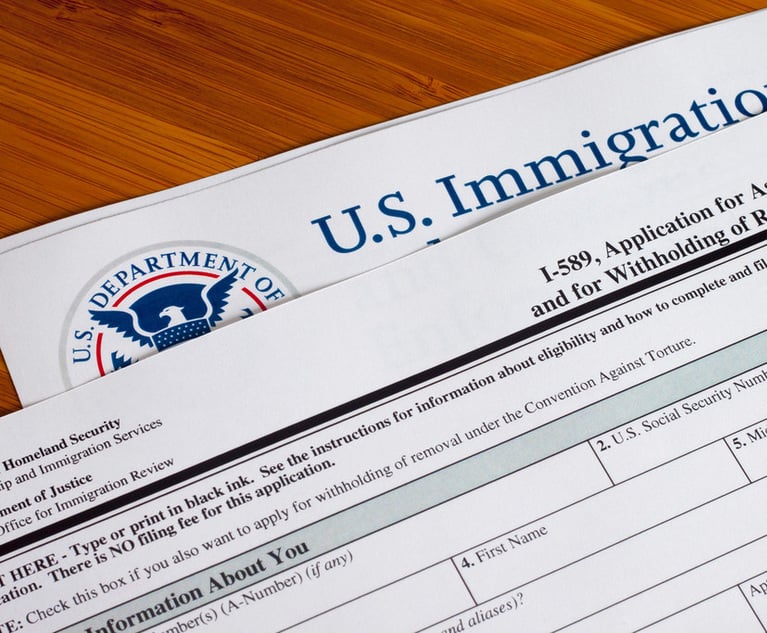Litigation Game Changer: Comparative Fault Shifts as Proponents Seek Graphic Warnings on Cigarettes
Experts weigh in on how graphic warning labels on cigarette boxes might affect litigation.
July 21, 2020 at 07:09 PM
4 minute read
 Open pack of cigarettes. Photo: 5 Second Studio/Shutterstock.com
Open pack of cigarettes. Photo: 5 Second Studio/Shutterstock.com
As Connecticut Attorney General William Tong joined a coalition of 25 attorneys general July 17 in filing an amicus brief supporting federal regulations requiring graphic image warning labels on cigarettes packages, legal experts weighed in on how such warnings could affect litigators.
Their consensus: It would be tougher to win litigation against Big Tobacco if these companies provided graphic warnings about the dangers of smoking.
But it still wouldn't be simple: Experts say jurors are often unpredictable, and could unleash surprise verdicts. Plus, geography would be a factor. For instance, jurors might view lawyers and smokers differently in various part of the country, including places like North Carolina, a big tobacco state.
"It would change the nature of the lawsuit to a certain extent," said Quinnipiac University School of Law professor Bill Dunlap. "For attorneys representing smokers, I'd say it would be harder for a plaintiff lawyer to show that the tobacco companies had not provided sufficient warning. It will just make their case that much harder."
Another factor: Dunlap said that if the U.S. Congress is correct, and the graphic images do reduce smoking, "then there will be fewer cases of cancer and less people will be smoking, thus fewer lawsuits."
Big Tobacco pushes back
R.J. Reynolds Tobacco Co. sued the Food and Drug Administration in the U.S. District Court for the Eastern District of Texas, arguing the U.S. Congress doesn't have the authority to decide what graphics should be on cigarette packages.
The FDA and the Department of Health and Human Services had given the U.S. Congress authority to come up with the warning labels, but R. J. Reynolds argued the move was unfair and inappropriate.
Natasha Webster, Reynolds spokesperson, didn't respond to a request for comment Tuesday.
But observers suggest that while the measure might hurt cigarette marketing, it could benefit tobacco companies in the courtroom—but only up to a point.
Leslie Levin, a professor of law at the University of Connecticut School of Law, said, "It could be harder to sue, depending on who the plaintiff is. Sometimes, people are alleging second-hand smoke, in which case I'm not sure warnings will make a lot of difference."
While the feeling among experts is that plaintiff attorneys might need a new strategy if they represent someone who sues after using a tobacco product with a graphic warning label, both Dunlap and Levin said it could also come down to juror attitudes.
"Sometimes, jurors do things not supported by the evidence," Levin said. "But attitudes toward plaintiffs and lawyers really vary in different parts of the country. Certain parts of the country where tobacco is grown might be more sympathetic to the defendant. It does depend on where the claim is brought."
Dunlap noted though that people today are more aware of the dangers of smoking than they were decades earlier. That could also benefit the plaintiffs' side, he said.
"Forty years ago it was very difficult to persuade a jury that smoking had caused cancer and that the smoker was not at fault," Dunlap said. "Times have changed. You are also dealing with a new, younger generation of potential jurors to whom smoking is not as pervasive as it was decades ago."
Jamie Sullivan, an attorney with Howard, Kohn, Sprague & FitzGerald in Hartford, said, "In products liability cases, the defendant will certainly claim the plaintiff was comparatively at fault for not heeding the warnings, especially if the warning is of graphic images. But it all depends on the jury."
Related stories:
This content has been archived. It is available through our partners, LexisNexis® and Bloomberg Law.
To view this content, please continue to their sites.
Not a Lexis Subscriber?
Subscribe Now
Not a Bloomberg Law Subscriber?
Subscribe Now
NOT FOR REPRINT
© 2025 ALM Global, LLC, All Rights Reserved. Request academic re-use from www.copyright.com. All other uses, submit a request to [email protected]. For more information visit Asset & Logo Licensing.
You Might Like
View All

Trump Administration Faces Legal Challenge Over EO Impacting Federal Workers
3 minute read
Settlement Allows Spouses of U.S. Citizens to Reopen Removal Proceedings
4 minute read
Law Firms Mentioned
Trending Stories
- 1How Some Elite Law Firms Are Growing Equity Partner Ranks Faster Than Others
- 2Fried Frank Partner Leaves for Paul Hastings to Start Tech Transactions Practice
- 3Stradley Ronon Welcomes Insurance Team From Mintz
- 4Weil Adds Acting Director of SEC Enforcement, Continuing Government Hiring Streak
- 5Monday Newspaper
Who Got The Work
J. Brugh Lower of Gibbons has entered an appearance for industrial equipment supplier Devco Corporation in a pending trademark infringement lawsuit. The suit, accusing the defendant of selling knock-off Graco products, was filed Dec. 18 in New Jersey District Court by Rivkin Radler on behalf of Graco Inc. and Graco Minnesota. The case, assigned to U.S. District Judge Zahid N. Quraishi, is 3:24-cv-11294, Graco Inc. et al v. Devco Corporation.
Who Got The Work
Rebecca Maller-Stein and Kent A. Yalowitz of Arnold & Porter Kaye Scholer have entered their appearances for Hanaco Venture Capital and its executives, Lior Prosor and David Frankel, in a pending securities lawsuit. The action, filed on Dec. 24 in New York Southern District Court by Zell, Aron & Co. on behalf of Goldeneye Advisors, accuses the defendants of negligently and fraudulently managing the plaintiff's $1 million investment. The case, assigned to U.S. District Judge Vernon S. Broderick, is 1:24-cv-09918, Goldeneye Advisors, LLC v. Hanaco Venture Capital, Ltd. et al.
Who Got The Work
Attorneys from A&O Shearman has stepped in as defense counsel for Toronto-Dominion Bank and other defendants in a pending securities class action. The suit, filed Dec. 11 in New York Southern District Court by Bleichmar Fonti & Auld, accuses the defendants of concealing the bank's 'pervasive' deficiencies in regards to its compliance with the Bank Secrecy Act and the quality of its anti-money laundering controls. The case, assigned to U.S. District Judge Arun Subramanian, is 1:24-cv-09445, Gonzalez v. The Toronto-Dominion Bank et al.
Who Got The Work
Crown Castle International, a Pennsylvania company providing shared communications infrastructure, has turned to Luke D. Wolf of Gordon Rees Scully Mansukhani to fend off a pending breach-of-contract lawsuit. The court action, filed Nov. 25 in Michigan Eastern District Court by Hooper Hathaway PC on behalf of The Town Residences LLC, accuses Crown Castle of failing to transfer approximately $30,000 in utility payments from T-Mobile in breach of a roof-top lease and assignment agreement. The case, assigned to U.S. District Judge Susan K. Declercq, is 2:24-cv-13131, The Town Residences LLC v. T-Mobile US, Inc. et al.
Who Got The Work
Wilfred P. Coronato and Daniel M. Schwartz of McCarter & English have stepped in as defense counsel to Electrolux Home Products Inc. in a pending product liability lawsuit. The court action, filed Nov. 26 in New York Eastern District Court by Poulos Lopiccolo PC and Nagel Rice LLP on behalf of David Stern, alleges that the defendant's refrigerators’ drawers and shelving repeatedly break and fall apart within months after purchase. The case, assigned to U.S. District Judge Joan M. Azrack, is 2:24-cv-08204, Stern v. Electrolux Home Products, Inc.










